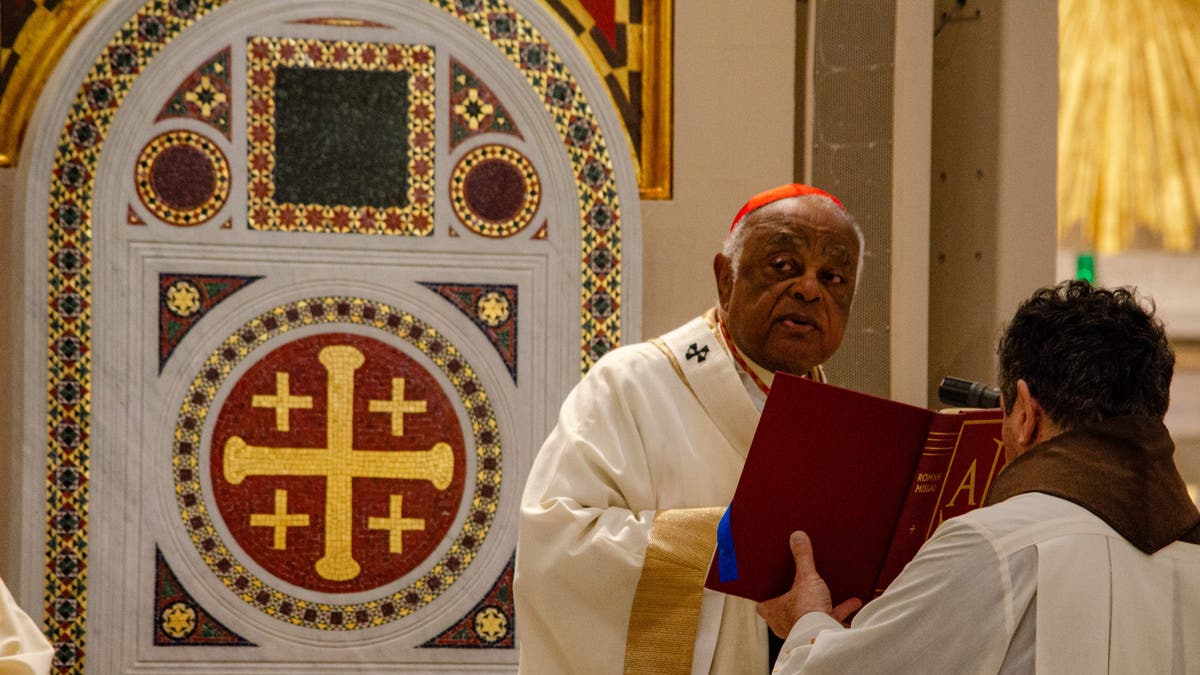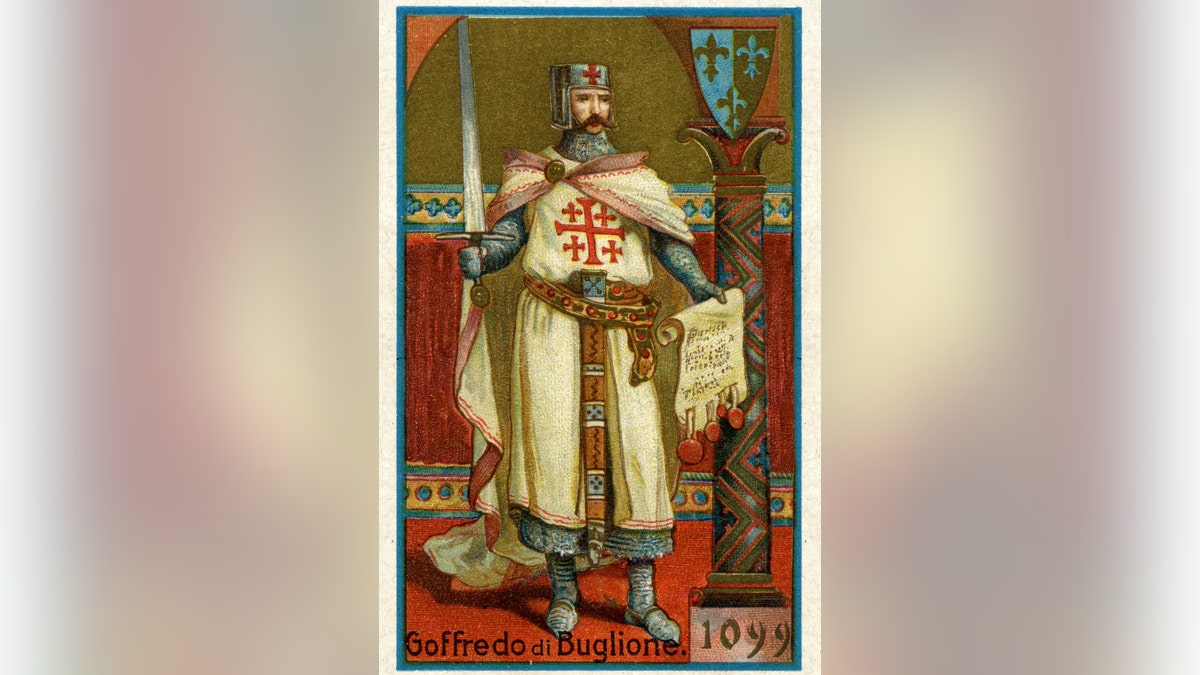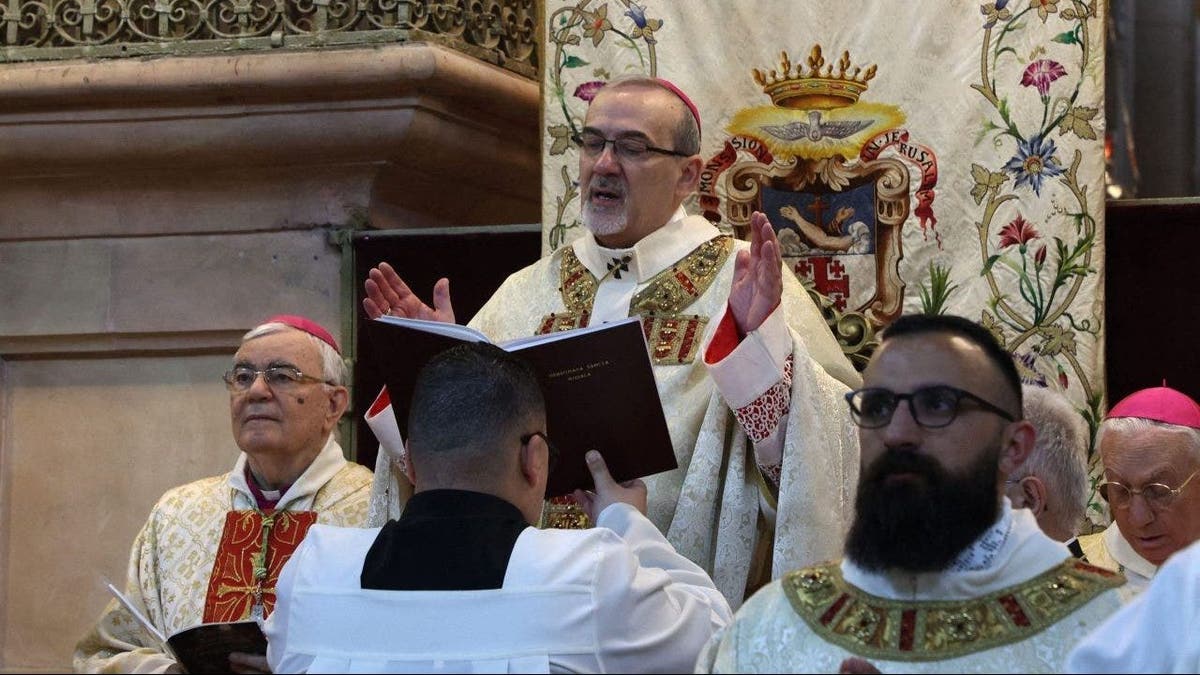President-elect Donald Trump’s new pick to lead the Department of Defense, Pete Hegseth, is being blasted for tattoos that some allege are symbols of White supremacy and Christian nationalism.
Hegseth, 44, is a former Fox News host and retired Army major who served in the infantry and was deployed to Iraq, Afghanistan and Guantánamo Bay, Cuba. Like many current and former military members, Hegseth has an array of tattoos with Christian and American symbolism.
One of the tattoos garnering the most attention is a symbol on Hegseth’s chest known as the “Jerusalem Cross,” which consists of one large cross surrounded by four smaller crosses.
Hegseth, an evangelical Christian, has said that the cross is a symbol of his Christian faith, but his detractors have said the Jerusalem Cross is an indicator of extremism, White supremacist and Christian nationalist sentiment. Some have even mistaken it for the Nazi swastika.
PENTAGON BRACING FOR SWEEPING CHANGES AFTER TRUMP NOMINATES PETE HEGSETH FOR SECRETARY

(Fox News hosts Pete Hegseth and Kayleigh McEnany.)
According to Hegseth, concern over the tattoo caused his leadership in the District of Columbia National Guard to pull him from a mission to guard the inauguration of President Biden and ultimately factored into his decision to retire from the military.
According to Father David Grenier, a Catholic priest and member of the religious order the Holy Land Franciscan Friars, which uses the Jerusalem Cross as its symbol, the cross originated in Eastern Christianity sometime in the fifth and sixth centuries and was later adopted by crusaders and the Christian Kingdom of Jerusalem from 1099 to 1291.
The cross, which adorns Grenier’s habit, continues to be used by his order today. The cross is also the emblem of the Latin Patriarchate of Jerusalem and the Catholic order, the Knights of the Holy Sepulchre.
He explained to Fox News Digital that the Jerusalem Cross has a dual meaning of representing the five wounds of Christ’s crucifixion and the gospel being taken to every corner of the world. In the latter interpretation, he said that the large cross represents Jerusalem from which the gospels reach the north, south, east and west, which are represented by the four smaller crosses.
TRUMP NAMING CABINET OFFICIALS AT ‘WARP SPEED,’ FAR AHEAD OF FIRST TERM PACE

Cardinal Wilton Gregory of the Archdiocese of Washington celebrates a Catholic Mass at the Franciscan Monastery of the Holy Land in America in Washington, D.C. A mosaic of the “Cross of Jerusalem” decorates the cardinal’s seat. (Holy Land Franciscan Friars)

Chromo illustration (from the Liebig figurine series) of Duke of Lower Lorraine, Goffredo di Buglione (1061–1100), Italy, circa 1900. As Goffredo III (between 1089–1100), he participated in the First Crusade (1096–1099). (Photo by Fototeca Gilardi/Getty Images)
While he said that he cannot speak to why Hegseth chose to tattoo the Jerusalem Cross on himself, he is not familiar with the cross being used to represent Christian supremacy sentiments. On the contrary, he said that the cross symbolizes the message of salvation being taken to all people. He also said that it is a fairly common practice for Christian pilgrims to Jerusalem to tattoo a Jerusalem Cross on themselves as a sign that they have visited the holy city.
“That was something that was happening, not necessarily for everyone, but for many people who traveled,” he said. “And even today, when they go to the Holy Land to have the Jerusalem cross tattooed on their body.”
One of those modern pilgrims with a Jerusalem Cross tattoo is Father Mike Schmitz, a podcaster, youth speaker and one of the most well-known Catholic priests in America.
In a video explaining his tattoo, Schmitz said that it serves as a reminder that “I never, ever, no matter what–I never want to be able to take off Jesus.”
“If you are baptized, you’ve been clothed in Christ. You can’t take Him off. Same with me. I’ve been clothed in Christ in my baptism, and I can’t take him off, even if I wanted to. But there is some kind of expression of that. Now it’s on my arm,” he said.
WHY TRUMP IS STICKING WITH GAETZ, HEGSETH DESPITE NEW ACCUSATIONS – AND HIS ‘MORNING JOE’ MEETING

(Father Mike Schmitz, a Catholic priest and media personality, speaks on a segment of Fox News America Reports on March 29, 2024.)
Similarly, Jennifer Greenberg, an evangelical author and composer, told Fox News Digital that the Jerusalem Cross is also very common in evangelical circles.
She said she was “shocked” to see the cross being compared to a swastika online, which compelled her to respond in a viral X post.
“To see something so beautiful and so precious, such a symbol of rich Christian heritage equated with Nazism, you know, white supremacy, it was just really disgusting,” she said.
According to Greenberg, the cross continues to be worn by pastors and to adorn Bibles and Christian books.

Latin Patriarch of Jerusalem Pierbattista Pizzaballa, center, leads a mass on Easter Sunday at the Church of the Holy Sepulchre in Jerusalem on April 9, 2023. The Jerusalem Cross emblem is shown on the banner directly behind Pizzaballa. (Photo by GIL COHEN-MAGEN/AFP via Getty Images)
CLICK HERE TO GET THE FOX NEWS APP
She also pointed out that Hegseth’s other controversial tattoos, “Deus Vult” and “Join or Die,” are common Christian and American symbols and are not associated with extremism.
The “Join or Die” tattoo, which depicts a chopped-up snake, is a political cartoon first published in 1754 in Benjamin Franklin’s Philadelphia newspaper. The cartoon was intended to encourage the various American colonies to unite over a common cause and became one of the most well-known symbols of the Revolutionary War.
However, perhaps more controversial is the Deus Vult tattoo, Latin for “God wills it.” This saying was a common battle cry during the Crusades, but, as Greenberg explained, it is also a common saying in Christianity indicating trust and abandonment of oneself to God’s providence.
“What they were saying is, ‘God, no matter what happens to me, if I die in battle, if I’m terribly injured, no matter what happens, may your will be done,’” she said. “I think it makes a lot of sense that someone like Pete Hegseth, being a veteran, would resonate with that kind of symbol because, as a veteran, as a soldier, he would have gone into battle. He would have walked between landmines, and this would have been a comforting thought for him. No matter what happens to me, God, let your will be done.”
Original News Source Link – Fox News
Running For Office? Conservative Campaign Consulting – Monthly Rates!
